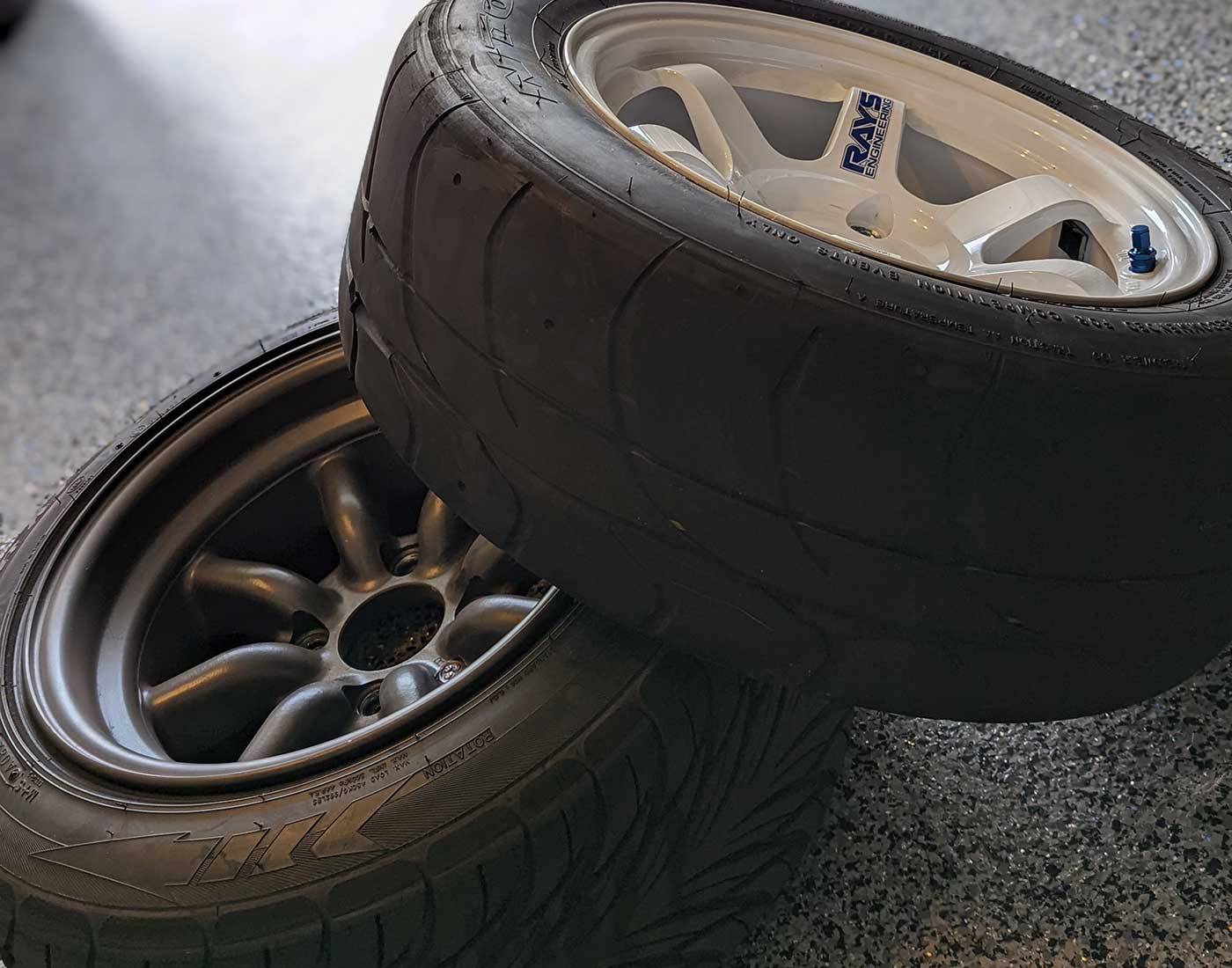All Categories
Featured
Table of Contents
The Michelin provided a comfortable driving experience, qualified by responsive steering and a dynamic understeer balance. In spite of the cooler testing problems, Michelin's constant time and grip over 3 laps suggests its viability for real-world applications.
Another noteworthy element was Yokohama's warm-up time. The tyre's initial lap was a second slower than the second, pointing to a temperature-related hold rise. This suggests the Yokohama could shine in completely dry, race-like problems. For everyday use, the Michelin could be a safer bet. Next off in line was the Hankook.
Trusted Tyre Fitting Near Me – Swan
It shared Michelin's secure understeer balance however did not have the latter's willingness to transform. Continental and Goodyear's efficiencies were remarkable, with Continental's new PremiumContact 7 showing a substantial enhancement in damp conditions compared to its predecessor, the PC6. This model was much much less conscious pack modifications and behaved similar to the Michelin, albeit with a little much less interaction at the limit.
It incorporated the safe understeer equilibrium of the Michelin and Continental with some sporty handling, verifying both foreseeable and fast. As an all-rounder for this Golf GTI, Goodyear's Asymmetric range was the standout, showing remarkable efficiency in the wet. Ultimately, the Bridgestone Potenza Sporting activity took the crown as the fastest tyre, albeit by a small margin.
This tyre obtained grippier as it heated up, comparable to the Yokohama. Vehicle drivers seeking an interesting damp drive might locate this tire worth taking into consideration. The standout performer in wet braking was the latest tyre on examination, the PremiumContact 7, though the outcomes are nuanced. We carried out damp stopping tests in three various means, twice at the new state and once at the used state.
Leading Tyre Rotation (Bennett Springs 6063 WA)
Preferably, we wanted the cool temperature examination to be at around 5-7C, however logistical hold-ups implied we checked with an ordinary air temperature level of 8C and water at 12C. While this was cooler than common examination problems, it was still warmer than real-world problems. The cozy temperature examination was done at a standard of 18C air and 19C water.
The third run involved damp braking tests on worn tires, particularly those machined to 2mm with a little run-in. While we meant to do even more with these used tires, weather constraints limited our screening. However, it deserves keeping in mind that wet braking is most vital at the used state, as tyres generally improve in completely dry problems as they wear.

Bridgestone, Goodyear, and Michelin saw the least efficiency decrease when put on. The Hankook tyre registered the tiniest efficiency decrease as temperature levels cooled, but it was amongst the most affected when worn.
Honest Tyre Deals
The take-home message right here is that no solitary tire excelled in all elements of damp braking, showing an intricate interaction of elements affecting tyre efficiency under different conditions. There was a standout tyre in aquaplaning, the Continental completed top in both straight and bent aquaplaning, with the Michelin and Goodyear likewise very good in deeper water.

Yokohama can profit from slightly even more grasp, a concern potentially affected by the colder problems. When it comes to handling, all tyres executed within a 2% array on the lap, showing their high-grade performance (Tyre repair). Nevertheless, taking into consideration these tyres basically target the very same client, it's fascinating to observe the considerable differences in feeling.
The surprise is because the PremiumContact 6 was among my favourites for stylish dry drives, yet its follower, the PremiumContact 7, appears more fully grown and appears like Michelin's performance. Among these, Hankook was the least accurate in guiding and interaction at the restriction. Cheap car tyres. Both Michelin and Continental offered charming initial steering, albeit not the fastest
If I were to advise a tire for a quick lap to a novice, claim my daddy, it would be just one of these. We have the 'fun' tyres, namely Yokohama and Bridgestone. Both were quick to guide and really felt sportier than the others, yet the compromise is a more spirited rear end, making them more tough to take care of.
Honest Tyre And Wheel Services – Bennett Springs WA
It gave comparable guiding to Bridgestone yet offered much better feedback at the limitation and much better grip. The Bridgestone Potenza Sport, however, seemed to deteriorate quite promptly after simply three laps on this requiring circuit. Lastly, there's Goodyear, which positioned itself someplace between the fun tyres and those often tending towards understeer.
All in all, these tires are excellent performers. In terms of tyre wear, the technique used in this test is what the industry refers to as the 'gold requirement' of wear.
Both the Bridgestone and Yokohama tyres substantially underperformed in contrast to the various other four tyres in terms of rolling resistance, with Continental somewhat exceeding the remainder. Pertaining to the comfort level of the tyres, as anticipated, most showed an inverse relationship with handling. The Continental, Michelin, and Goodyear tires performed best across various surface area kinds tested.

Bridgestone started to reveal signs of firmness, while Yokohama was especially rough over pits. We did gauge inner sound degrees; nevertheless, as is often the instance, the results were carefully matched, and due to weather constraints, we were not able to conduct a subjective assessment of the tires noise. Finally, we considered abrasion figures, which determine the amount of tire walk shed per kilometre, normalised to a one-tonne car.
Honest Tyre Packages Near Me
This figure represents the amount of rubber dust your tires produce while driving. Michelin led in this classification, creating over 9% less rubber particulate matter.
Latest Posts
Top Wheel Alignment Services Near Me
Honest Tyre Safety Checks (West Swan 6055 WA)
Leading Tyre Maintenance Near Me